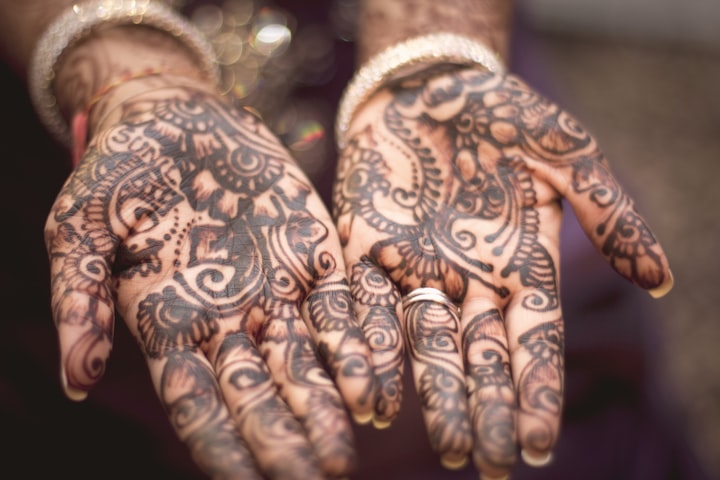
Mehndi, also known as henna, has been a part of Indian culture for centuries. This ancient form of body art is not only a way to adorn oneself but is also a reflection of India's rich cultural heritage. In this, we will explore the fascinating history and cultural significance of mehndi in India.
Mehndi is a form of body art that is popular in many cultures around the world, especially in South Asia, North Africa, and the Middle East. It is often used to create intricate designs on the hands, feet, and other parts of the body for weddings, festivals, and other special occasions. The natural dye of mehndi is believed to have cooling properties, which makes it a popular choice in hot and dry climates. In addition to its decorative uses, mehndi is also used for medicinal purposes and has been used in traditional medicine for centuries to treat a variety of ailments.
History of Mehndi in India
Mehndi has a long and rich history in India. The earliest known evidence of mehndi use in India dates back to the Bronze Age, with the discovery of mehndi-stained mummies in ancient Egypt. However, it is believed that mehndi was introduced to India by the Mughals during the 12th century.
During the Mughal era, mehndi became a popular form of body art among women. It was not only used for decorative purposes but was also believed to have medicinal properties. Mehndi was also used to treat various ailments, including headaches, fever, and skin conditions.
Cultural Significance of Mehndi in India
Mehndi is an integral part of various celebrations and ceremonies, such as weddings, festivals, and religious events. In Indian weddings, mehndi is applied to the bride's hands and feet, and sometimes even to the groom's hands. Mehndi is also applied to the hands and feet of women during festivals such as Diwali, Eid, and Karva Chauth.
In addition to being a form of body art, mehndi also has cultural significance. Mehndi is also considered to be a symbol of love and affection, as it is often applied by friends and family members.
Process of Applying Mehndi
Mehndi is a dye made from the dried leaves of the henna plant. The dried leaves are finely crushed, and transformed into a powder, and mixed with water until a thick paste is formed. Next, the paste is skillfully administrated to the skin using a specialized cone-shaped applicator. Once the paste dries, it is scraped off, revealing the mehndi design underneath.
Mehndi designs can range from simple to intricate, and the design often depends on the occasion for which it is being applied. Traditional Indian mehndi designs include paisley patterns, peacock motifs, and floral designs.
Future of Mehndi in India
Despite the popularity of mehndi in India, there has been a decline in its use in recent years. This is due to the availability of synthetic henna, which is cheaper and easier to apply. However, synthetic henna is not as safe or natural as traditional henna and can cause skin allergies and other health issues.
To preserve the tradition of mehndi in India, efforts are being made to promote the use of natural henna and to educate people about its benefits. Mehndi artists are also experimenting with new designs and techniques, incorporating modern elements into traditional designs.
In conclusion, mehndi is an part of Indian culture and traditions. Its rich history and cultural significance make it a unique and fascinating form of body art. While its popularity may have declined in recent years, the future of mehndi in India looks bright as efforts are made to preserve this ancient tradition.





Comments
There are no comments for this story
Be the first to respond and start the conversation.